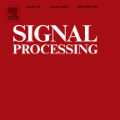Many modern data analytics applications on graphs operate on domains where graph topology is not known a priori, and hence its determination becomes part of the problem definition, rather than serving as prior knowledge which aids the problem solution. Part III of this monograph starts by addressing ways to learn graph topology, from the case where the physics of the problem already suggest a possible topology, through to most general cases where the graph topology is learned from the data. A particular emphasis is on graph topology definition based on the correlation and precision matrices of the observed data, combined with additional prior knowledge and structural conditions, such as the smoothness or sparsity of graph connections. For learning sparse graphs (with small number of edges), the least absolute shrinkage and selection operator, known as LASSO is employed, along with its graph specific variant, graphical LASSO. For completeness, both variants of LASSO are derived in an intuitive way, and explained. An in-depth elaboration of the graph topology learning paradigm is provided through several examples on physically well defined graphs, such as electric circuits, linear heat transfer, social and computer networks, and spring-mass systems. As many graph neural networks (GNN) and convolutional graph networks (GCN) are emerging, we have also reviewed the main trends in GNNs and GCNs, from the perspective of graph signal filtering. Tensor representation of lattice-structured graphs is next considered, and it is shown that tensors (multidimensional data arrays) are a special class of graph signals, whereby the graph vertices reside on a high-dimensional regular lattice structure. This part of monograph concludes with two emerging applications in financial data processing and underground transportation networks modeling.
翻译:图表上的许多现代数据分析应用在图层上运行的域中,图形的图层没有事先已知的图层,因此,其确定性成为问题定义的一部分,而不是作为问题解决办法的先前知识。本专论第三部分首先探讨如何学习图层层学,从问题的物理学已经表明可能具有表层学,到从数据中学习图层表层学的多数一般案例。特别强调基于观测到的数据的相关性和精确矩阵的图表表层定义,加上更多的先前的奥质知识和结构条件,例如图层连接的平滑或宽度。为了学习稀有的图(有少量边缘),最不绝对的缩缩缩和选择操作者,即LASSO,以及其图形特定变异,至于从图层表表表表表表学中学习的两种变式。对于图层表层学习模式的深入阐述,通过一些具体定义的图层图解,例如电路、线性热传输、社交和计算机流流流流学的图状图状,至GSentral-G的图图图图图图图图图解中,也由Sten-GG-G的图图图图图图图图图图图解的图解系统组成。




